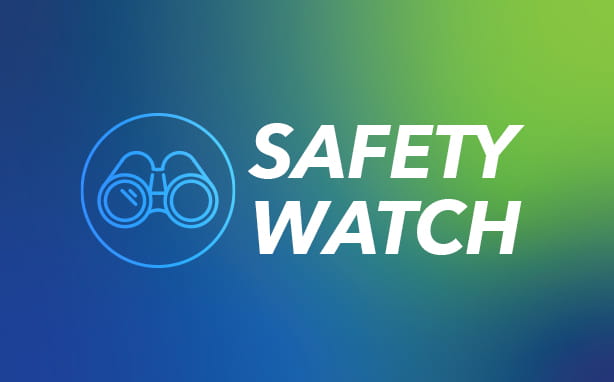Public policy
The Affordable Care Act (ACA) and Children’s Health Insurance Program Reauthorization Act (CHIPRA) established a number of initiatives to improve health outcomes. Particularly relevant is the National Quality Strategy (NQS), which was established in 2011 as part of the ACA. The NQS identifies three aims that are built on the often-cited work of the Institute for Healthcare Improvement (IHI) Triple Aims, which are:
- Better health: Improve the health of the U.S. population by supporting proven interventions to address behavioral, social and environmental determinants of health in addition to delivering higher-quality care.
- Better care: Improve the overall quality by making health care more patient-centered, reliable, accessible and safe.
- Smarter spending: Reduce the cost of quality health care for individuals, families, employers and the government.
- It considers the health of communities at different levels and affordability for multiple groups.
So far, the bulk of standardized quality metrics have focused on adult care; however, there are growing opportunities through state and federal demonstration programs, and in the private sector, to develop and promote standardized pediatric metrics. While some metrics do exist for pediatrics there continues to numerous gaps, especially for measures suitable for accountability programs.
Examples of funded programs to improve children’s health care quality include CHIPRA demonstration programs that bring a pediatric focus to quality measurement efforts and establish a core set of metrics to track improvement in care in children. The Pediatric Quality Measurement Program’s seven Centers of Excellence, established by CHIPRA, focus on developing and implementing pediatric quality measures in mental health, readmissions, coordination of care, and other critical areas for which gaps had been identified.
Other funded programs include the Center for Medicare and Medicaid Innovation’s (CMMI) awards1, which fund several initiatives that focus on measuring the success of care coordination programs for medically complex children. Ten hospitals and Children’s Hospital Association received a CARE Award, which aims to improve the care delivered to the medically complex through the utilization of Quality Improvement (QI) metrics, and patient-generated data to assess performance.
Changing health care environment
Children’s hospitals and other provider organizations are experimenting with new delivery and payment models and bearing risk for defined populations. To do so, they must depend on a set of metrics, negotiated with payers to measure and track performance. The implications of selecting inappropriate metrics include financial penalties potentially for providers and the organization, thus highlighting the financial importance of these metrics. For adults there exists Shared Savings Program metrics, promulgated by the Centers for the Medicare and Medicaid Services (CMS) but the gap remains in pediatrics for standardized measures suitable for the array of accountability uses, including payment risk and public reporting.
Providers are being held more accountable for the care they deliver. Physicians are charged with defining quality care and aligning or differentiating between practice level quality goals and overarching outcome goals. Often quality goals vary from organization to organization, even within similar provider types. While physicians play an important role in determining appropriate quality measures for their populations, the standardization of metrics may help alleviate some of this responsibility.
States have the role of supporting and leading delivery and payment system reform and infrastructure development. States like Arkansas have committed to delivery and payment system reform, implementing medical and health homes, and switching to episode-based payments. Arkansas pioneered movements in Health Information Technology to implement multi-payer provider portals where providers enter quality data and can access reports created on their performance. This is achieved through public-private partnerships with the state Medicaid program and BlueCross Blue Shield.2
Maryland is leading the way in payment reform with the nation’s only all-payer hospital rate regulation system, anticipated to save at least $330 million over a 5-year period. The system aims to reach cost and quality targets within an all-payer system based upon per-capita total hospital cost growth. 3
Data infrastructure
As the market shifts from volume to value, the infrastructure supporting that change necessarily needs to be more robust. Lack of data standardization and interoperability with Medicaid, CHIP and commercial data within and between states equates to a lack of comparability and difficulty in standardized measurement. This lack of standardization in infrastructure and metrics between and among providers, payers, and state and local health agencies has meant that even if appropriate measures were established, there would be no way to ensure they were scalable.
To combat this, efforts to standardize data are underway with groups like the All-Payers Claims Database Council (APCD) facilitating regional harmonization of patient-centered data collection and use.4 Other efforts include the integration of national-level data, like Medicare data, into available standardized data sets.5
Data infrastructures are envisioned to support hybrid data feeds consisting of claims, electronic health records (EHR), data derived from medical devices, and patient/caregiver reported survey data in Medicaid, CHIP and commercial plans. Important for pediatrics is the incorporation of state-based registry information such as immunization records. The development and update of health information exchanges will eventually allow for interoperability and the exchange of important health care data.6
The Medicaid and Medicare Electronic Health Record Incentive Programs aim to capture specific patient information and enable that information to be linked to information exchanges. The meaningful use of certified EHR technology regulations standards work toward that goal.
Consumers
While there is a continued demand for data and applications that enable providers, payers, and governments to better understand consumers, health care and spend, there is increasing demand from consumers to better understand the care they receive
Consumers flock to quality reporting mechanisms like US News and World Report to see which providers are the most reputable and have the best practices and outcomes. Metrics for provider performance may be available for certain procedures but often vary from provider to provider and thus lack the comparability necessary to be fully accessible or worthwhile for consumers. Consumers continue to push for quality and pricing transparency and startups like price check and guru crowd-sourced database of health care services pricing arise to serve these demands.
Data trends include increasing amounts of patient-generated data, like patient-survey data. The industry must evolve its security base organically, so consumers feel their personal health information is protected as data becomes more integrated with larger, complex data management systems.
These market shifts require enhanced data infrastructure development to support the development, refinement, and standardization of pediatric measures used in emerging payment and delivery models and—of those used to inform consumers directly—the value of their health care purchase.
References
- "Health Care Innovation Awards to provide better health care and lower costs," http://www.hhs.gov, July 9, 2014.
- "Arkansas Health System Transformation State Innovation Plan," accessed September 25, 2015.
- "Maryland All-Payer Model," Centers for Medicare and Medicaid Services, last modified February 6, 2015.
- "All-Payer Claims Database Council," accessed September 25, 2015.
- CMS Standard Analytic Files, accessed October 6, 2015.
- "Health Information Exchange (HIE)," HealthIT.gov, last modified April 22, 2014.




